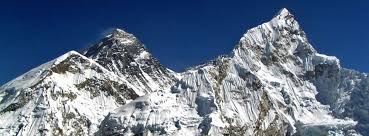Everest Expedition: Conquering the World's Highest Peak
 Travel&Trek
Travel&Trek
An Everest expedition is the ultimate dream for mountaineers and adventure seekers worldwide. Standing at 8,848 meters (29,029 feet), Mount Everest is the highest peak on Earth, a symbol of human endeavor, and a testament to the spirit of exploration. Each year, hundreds of climbers from around the globe journey to Nepal, driven by the desire to stand on the roof of the world. This blog delves into the challenges, preparation, and unparalleled experience of an Everest expedition.
Preparation and Planning
Embarking on an Everest expedition requires meticulous preparation and planning. Months, if not years, of physical training are essential to build the stamina and strength needed to endure the grueling conditions of high-altitude climbing. Cardiovascular fitness, muscular endurance, and flexibility are critical components of a climber's training regimen.
In addition to physical preparation, climbers must assemble a comprehensive gear list, including specialized clothing, climbing equipment, and survival essentials. Items such as insulated jackets, high-altitude boots, crampons, ice axes, and oxygen systems are vital for a successful ascent. It is also crucial to secure the necessary permits and arrange logistics through a reputable expedition company, ensuring support from experienced guides and Sherpa teams.
The Route
There are two primary routes to the summit of Everest: the South Col route from Nepal and the North Ridge route from Tibet. The South Col route, starting from the town of Lukla, is the most popular and accessible. The journey begins with a scenic flight from Kathmandu to Lukla, followed by a trek through the Khumbu Valley, passing through vibrant Sherpa villages, dense forests, and glacial moraines.
Key milestones along the route include Namche Bazaar, the bustling heart of the Khumbu region; Tengboche, home to a famous Buddhist monastery; and Dingboche, a vital acclimatization stop. The trek continues to Everest Base Camp (5,364 meters / 17,598 feet), where climbers spend several days acclimatizing and preparing for the ascent.
The Climb
The climb itself is divided into several stages, each presenting unique challenges. From Base Camp, climbers navigate the treacherous Khumbu Icefall, a labyrinth of towering ice seracs and deep crevasses. Beyond the Icefall lies Camp I, followed by the Western Cwm, a broad glacial valley leading to Camp II.
The ascent to Camp III involves scaling the steep Lhotse Face, a daunting ice wall that requires fixed ropes and precise climbing techniques. Camp IV, located at the South Col, serves as the final staging point for the summit push. Climbers rest here, preparing for the ultimate challenge: the ascent to the summit.
The final push begins in the early hours of the morning, often around midnight. Climbers navigate the daunting terrain of the South Summit, the Hillary Step, and finally, the summit ridge. Reaching the summit is a moment of unparalleled triumph, offering breathtaking panoramic views and the profound realization of standing on the highest point on Earth.
Challenges and Rewards
Climbing Everest is fraught with challenges, including extreme altitude, unpredictable weather, and physical exhaustion. Altitude sickness, frostbite, and avalanches are constant threats. However, the rewards are immense. The sense of achievement, the camaraderie with fellow climbers, and the stunning natural beauty of the Himalayas make the expedition a life-changing experience.
Conclusion
An Everest expedition is more than just a climb; it is a journey of perseverance, determination, and self-discovery. It tests the limits of human endurance and offers a profound connection with nature. For those who dare to take on the challenge, standing atop Mount Everest is the ultimate testament to the power of the human spirit. Whether you are an experienced mountaineer or an aspiring adventurer, an Everest expedition promises an unforgettable adventure that will stay with you forever.
Prepare, train, and dream big—Mount Everest awaits.
Subscribe to my newsletter
Read articles from Travel&Trek directly inside your inbox. Subscribe to the newsletter, and don't miss out.
Written by

Travel&Trek
Travel&Trek
Island Peak Climbing is one of the most beautiful trekking and peak climbing centers in the Himalayas. Located in the Everest/Khumbu region of Eastern Nepal, Island Peak Climbing is perfect for you if you are an adventure lover and enthusiast of energetic and challenging treks. The 19 days journey takes you through some of the surreal landscapes of the Everest/Khumbu Region until you conquer the top of magical Island Peak.